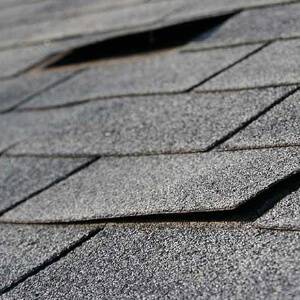If you’re looking to replace your roof soon, an important thing you’ll have to consider is the different types of shingles. There is a variety of materials available on the market, but it’s up to you to decide which one is worth investing in.
Residential shingles are about more than aesthetics, though. It’s also smart to consider the area you live in and its climate, and how long you’d like the material to last. Each is going to come with its pros and cons, but they’ll also each bring a unique character to your home.
Read on to learn about 7 types of shingles to consider for your next roof installation.
1. Wood
When it comes to wood, you can expect a long lifespan of 20 to 25 years. This material is best for homes in dry areas like Kansas, Iowa, Nebraska, Oklahoma, and other states in the Great Plains.
It’s good to know ahead of time that this particular material is particularly vulnerable to fire, and some areas may not allow you to use it due to fire codes. It’s also prone to rot and termites, and can’t withstand hail very well.
It’s an eco-friendly, mid-priced material that brings with it an air of rustic charm. It’s also relatively easy to clean with a power washer if mold or mildew begins to accumulate.
2. Metal
Metal shingles are best for houses in the northwest or southeast. Their resistance to rot, rain, wind, fire, and hail make them perfect for these storm-ridden areas. Though the material comes with a higher price tag, you’ll actually be saving money over its long life span of 50 to 75 years.
Metal isn’t always quiet when rain strikes, though, which is something to consider. Hail also has a tendency to damage shingles. These shingles also have the potential to be DIY-friendly since they can simply be screwed into the roof.
3. Asphalt
Asphalt shingles are best for homes in the northwest and northeast, but they’re pretty common to any area of the United States. Different types of asphalt shingles can be made of fiberglass, wood, or even cellulose. These shingles are sold in multiple sizes and colors, but they come with a relatively short lifespan of 15 years.
They’re popular not only for their versatility but also for their durability. Asphalt shingles can withstand snow, hail, fire, and water. In some cases, using this material even makes you eligible for a tax credit.
4. Slate
Slate has a fantastic ability to hold heavy amounts of snow, which is perfect for homes in the midwest. The downside, though, is that slate shingles can sometimes be too heavy for certain structures. If you’re interested in slate shingles, it’s best to ask your roofing contractor if it’s a possibility before starting.
This shingle material is hail-, heat-, leak-, and even moisture-resistant, which means it’s a long-lasting material that can live to be 100 years old, no matter the climate it’s placed in.
Slate is going to come with a hefty price tag, but with the money you’ll be saving in the long run, it might just be well worth the investment.
5. Clay
Clay is a particularly popular material in the Spanish-style homes of the southwest. They’re non-combustible and fade-resistant, which makes them a durable material to combat reflecting sunlight without losing any color or appeal over time.
Like slate, clay tiles are going to require a consultation with your roofing contractor or an engineer to ensure the structure of your home can handle the weight of the shingles. Roofs can sometimes need extra framing to ensure the shingles have the support they need.
Clay tiles are going to be more expensive than concrete ones, but they come with a lifespan of 40 to 50 years with proper maintenance.
If anything happens to these tiles, they can be easy to repair with roofing cement, but total DIY replacement can be difficult to do. A professional might have to be brought in for major repair jobs.
6. Composite
Clay shingles are great for houses in any region. They’re made of rubber, polymer, or plastic, and can be sold in a variety of colors and styles. They’re also great for mimicking the look of wood or slate shingles, and they don’t come with a hefty price tag.
Their lifespan is usually around 50 years, and they’re great at retaining their color throughout that entire time. They come with heat- and fire resistance and are can be great defenses against moss and UV rays.
You might, however, have a hard time finding a qualified roofer that can install this material onto your roof. They also offer little insulation, which can have an effect on your overall energy bill. Overall, the newer roofing material is a great option no matter the area you’re in, but it’s definitely something to weigh the pros and the cons over.
Remember These Types of Shingles
Remembering these types of shingles, along with their unique characteristics and potential drawbacks, is going to help you make the best decision you can for your home. There are a lot of things to consider when it comes to roofing material, but it’s a pretty easy decision once you know what you want.
Creating a list of the things you want before getting started can help you weed through options from the get-go. From there, it’s just about your personal preference!
If you’re looking for a reliable roofing contractor that delivers consistent results every time, contact us today for a free quote.

